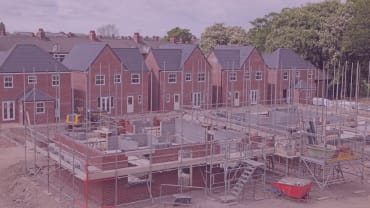The Clyde Gateway area has been designated as Scotland's first Green Regeneration and Innovation District. Investment in the area has been designed to unlock development potential through long term sustainable approaches to infrastructure reuse and development.
Ambitious mixed-use regeneration projects need cash and incentives to attract partners to invest and make the project a success. Tax incentives can help, showing potential investors that the Government is backing the initiative and making investment more affordable.
Research and development tax credits are an important support for innovative business, incentivising businesses to invest in Research and Development (R&D). The scope of R&D is wider than is generally appreciated, and developing renewable technologies and climate mitigation measures could well qualify as R&D. This would give qualifying companies an enhanced corporation tax deduction of 12% (or 130% for smaller companies) or a cash repayment if the company is non-tax paying. At the Autumn Budget 2021 the UK Government announced a review of R&D tax credits to ensure that they are up to date and sufficiently focused on UK activities, so it may be that the R&D tax credits regime will become even more beneficial in the future.
Where brownfield sites are being regenerated, companies may be able to claim additional tax relief for the cost of cleaning up contaminated land through Land Remediation Relief. This allows businesses to claim corporation tax relief of 150% of the cost of decontamination. The relief is available where there is contamination which could cause harm to human or animal health, damage to buildings or pollution of groundwater which has arisen due to previous industrial activity. It also applies to certain specified natural contaminants such as radon, arsenic and Japanese knotweed. A form of Land Remediation Relief is available for bringing derelict land back into productive use by removing piles, foundations and other structures which are preventing further development.
A number of other approaches have been used in the past to assist with regeneration and could perhaps be used again such as stamp duty Disadvantaged Areas Relief. From 2003 to 2005 there was a complete exemption from Stamp Duty Land Tax (SDLT) and subsequently from SDLT for the purchase or lease of commercial property in so called "disadvantaged areas". The relief was very popular, and certainly appeared to incentivise purchases and leases of properties in disadvantaged areas. The areas eligible for relief were designated as Enterprise Areas, and there were criticisms that the Enterprise Areas did not allow for sufficient granularity in the application of the relief, so that properties in areas which were not actually disadvantaged were able to benefit from the relief. Now that SDLT has been replaced by Land and Buildings Transaction Tax (LBTT) in Scotland, it would be open to the Scottish Government to introduce a targeted LBTT relief for investment in regeneration areas.
The Business Property Renovation Allowance (BPRA) which was available between April 2007 and March 2017 gave a 100% tax allowance for the costs of converting or renovating buildings in disadvantaged areas which had been unused for at least a year. The BPRA allowed many projects to proceed which would not otherwise have been financially viable. Perhaps there is a case for a modernised version of the relief to be introduced to stimulate development in green regeneration areas and encourage reusing instead of rebuilding, provided sufficient safeguards could be introduced to ensure that only genuine projects could benefit ?
Non-domestic (business) rates can also play a part in encouraging green regeneration. The Scottish Government has introduced a 90% relief from non-domestic rates for new heat networks run from renewable sources, which will be available until 31 March 2024. This is in addition to the existing 50% relief for heat networks which has been extended until 2032.
At the UK Budget in October 2021, the UK Government announced the introduction of new measures to support green investment and the decarbonisation of non-domestic buildings. This will provide rates exemptions for eligible green plant and machinery such as solar panels, wind turbines and battery storage used with renewables as well as electric vehicle charging points. The Scottish Budget will be delivered on 9 December 2021, and it will be interesting to see whether similar rates exemptions for green technology will be introduced in Scotland.
Contributor
Director of Corporate Tax











